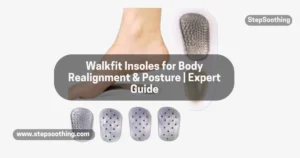Understanding the importance of insoles is essential for everyone who wants to improve their foot health. Many people suffer from common foot issues like plantar fasciitis or flat feet, which can lead to foot pain and fatigue. The right shoe inserts can provide the necessary support you need and cushioning to help with proper foot alignment. This makes a big difference in daily comfort and mobility, especially for those who spend long hours standing at work.
Choosing high-quality insoles can have a transformative effect on one’s overall well-being. For instance, individuals can experience a significant reduction in discomfort when their full-length insoles provide targeted support for sensitive areas of their feet. Additionally, using 3D-printed insoles can enhance stability and improve weight distribution, which ultimately helps to reduce strain on the back, hips, and knees.
When people invest in the right accessories for their footwear, they often find a personal revelation about the importance of foot biomechanics. The right insoles not only alleviate persistent foot pain but also promote better posture and comfort during daily activities. By making informed choices about their insoles, individuals can enjoy improved comfort and a healthier lifestyle.
A Guide to Insoles: What They Are and Why You Need Them
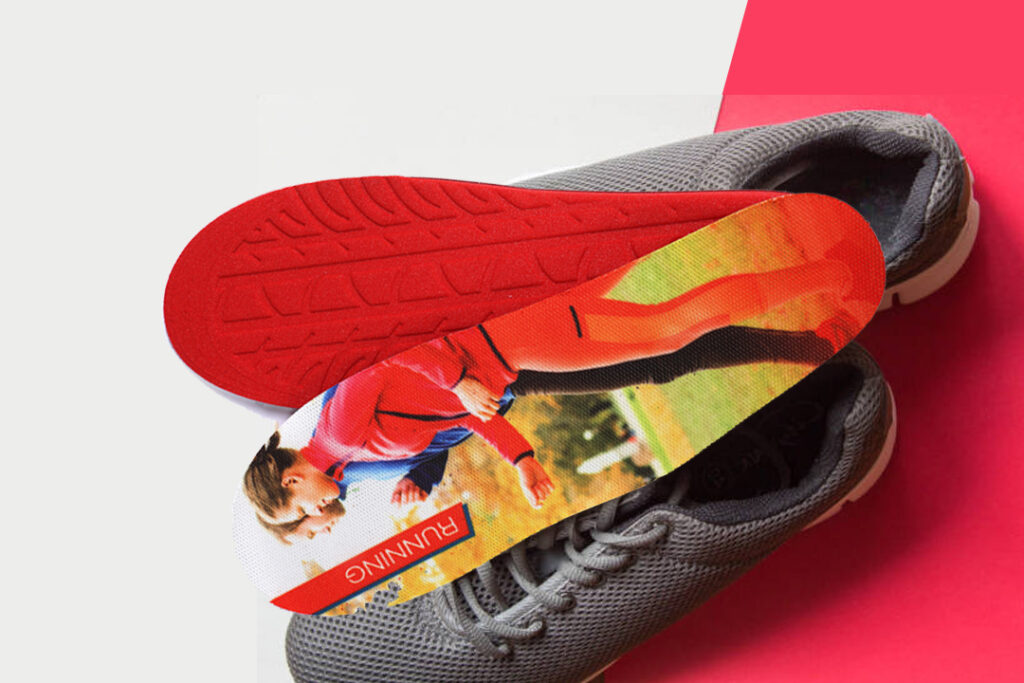
What Are Insoles and Why Do They Matter?
Insoles, also known as shoe inserts or footbeds, are supportive components placed inside shoes to provide additional comfort, support, and alignment for the feet. These often-overlooked accessories play a crucial role in foot health by offering stability, cushioning, and targeted support where needed. As someone who has struggled with foot pain in the past, I can attest to the transformative impact that the right pair of insoles can have on overall comfort and well-being.
The Role of Insoles in Foot Health
Insoles are not just about adding an extra layer of padding to your shoes; they serve a fundamental purpose in promoting proper foot alignment and reducing strain on various pressure points. By distributing weight more evenly throughout the feet, insoles can help alleviate discomfort associated with conditions such as plantar fasciitis, flat feet, overpronation, and other common foot issues. The use of 3D-printed insoles has been studied extensively for their effectiveness in correcting foot biomechanics and providing personalized orthotic correction for individuals suffering from foot-related problems.
Personal Anecdote: My First Experience with Insoles
I vividly remember my first encounter with insoles when I was experiencing persistent foot pain during long hours of standing at work. After incorporating high-quality insoles into my footwear, I noticed a significant reduction in discomfort and fatigue. These insoles changed my experience from excruciating pain to manageable discomfort while wearing the same shoes. This personal revelation highlighted the profound impact that the right pair of insoles can have on daily comfort and mobility.
The Benefits of Using the Right Insoles
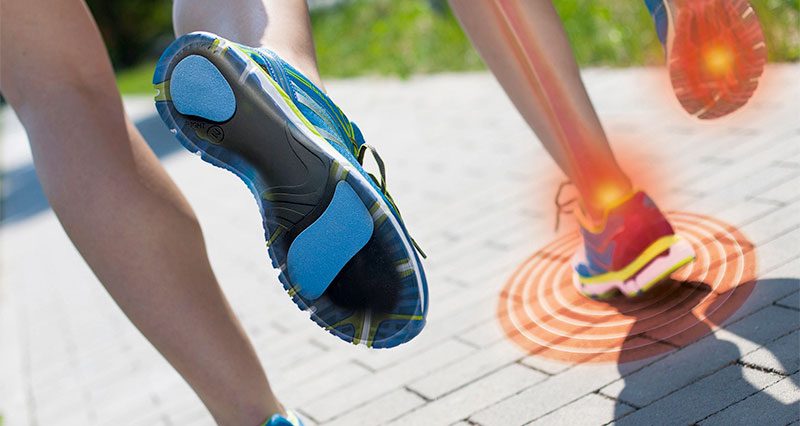
Improved Posture and Comfort
Beyond addressing specific foot ailments, using the right insoles can lead to improved posture and overall body alignment. By providing extra support for the feet, these inserts help distribute weight more evenly throughout the body, thereby reducing strain on the back, hips, and knees. This enhanced posture not only contributes to physical well-being but also plays a pivotal role in preventing injuries related to poor alignment.
Reduction in Foot Pain and Fatigue
One of the most immediate benefits of utilizing appropriate insoles is a noticeable reduction in foot pain and fatigue. Whether it’s alleviating pressure points or providing targeted support for sensitive areas, these inserts can significantly enhance daily comfort levels while mitigating discomfort associated with various foot conditions.
In addition to personal experiences like mine, statistical data supports the widespread use of custom orthotic insoles as an effective method for pain reduction and improving foot function among individuals suffering from plantar fasciitis. Moreover, healthcare professionals are increasingly advocating for their use as part of comprehensive treatment plans for foot-related disorders due to growing evidence supporting their efficacy.
By understanding what constitutes suitable insole options based on individual needs and activities, one can embark on a journey towards prioritizing foot health through informed decisions regarding footwear accessories.
Understanding Your Needs

In order to choose the right insoles for your needs, it’s essential to understand your specific foot pain and conditions as well as assess your activity level and lifestyle. By identifying these factors, you can make informed decisions about the type of insoles that will best support your feet and enhance your overall comfort.
Identifying Your Foot Pain and Conditions
When it comes to foot pain, understanding the root cause is crucial for selecting the most suitable insoles. Common foot issues such as plantar fasciitis, flat feet, metatarsalgia, and high or low arches can contribute to discomfort and affect mobility, making it essential to buy insoles that cater to your foot type. Symptoms may include persistent heel pain, arch pain, ball-of-foot pain, or general foot fatigue. It’s important to pay attention to these symptoms and seek professional advice if the pain persists or worsens.
Seeking professional advice from a podiatrist or orthopedic specialist can provide valuable insights into your specific foot conditions. They can conduct a thorough assessment of your feet, identify any structural irregularities or imbalances, and recommend appropriate insole solutions tailored to your individual needs.
Assessing Your Activity Level and Lifestyle
Matching the right insoles to your daily activities is essential for ensuring optimal comfort and support. For individuals with an active lifestyle that involves running, walking, or standing for long periods, insoles designed for impact absorption and stability are particularly beneficial. Considerations for athletes and active individuals should also encompass features such as moisture-wicking materials, breathability, and enhanced shock absorption to withstand rigorous physical activities.
Moreover, individuals with sedentary lifestyles or those who spend extended periods sitting may require insoles that focus on cushioning and pressure relief. These insoles can help alleviate discomfort associated with prolonged sitting or standing by providing gentle support throughout the day.
By understanding your unique foot pain and conditions along with evaluating your activity level and lifestyle, you can effectively narrow down the options when choosing the right insoles for your specific needs.
Scientific Research Findings:
- Insoles are designed to provide additional support and cushioning to distribute weight more evenly.
- They can help correct imbalances such as high or low arches which contribute to foot pain.
- Insoles are particularly effective in reducing pain associated with conditions like plantar fasciitis.
- Rising awareness about the importance of foot health has led consumers to actively seek solutions for alleviating discomfort.
- Orthotic insoles offer a non-invasive means of addressing various foot conditions by providing support, cushioning, and proper alignment.
- Insoles work by providing the support you need for pain relief and comfort, gently aligning feet and ankles to reduce pain associated with flat feet.
- Insoles are designed to reduce wear on feet during activities like standing, walking, running.
- Custom insoles lead to a significant reduction in discomfort for individuals with specific foot conditions.
- Arch support insoles provide targeted support helping alleviate common foot conditions such as plantar fasciitis.
Choosing the Right Insoles
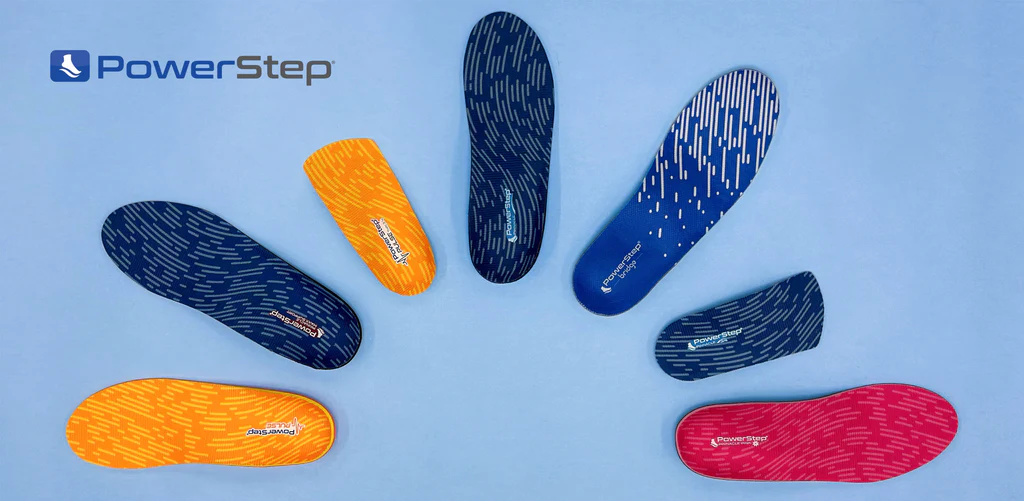
When it comes to choosing the right insoles, several factors should be taken into consideration to ensure that they effectively address your specific needs. From material types to the decision between custom and over-the-counter options, understanding these considerations is crucial for optimizing comfort and support.
Factors to Consider When Choosing Insoles
Material Types and Their Benefits
Insoles are designed to fit snugly inside your shoes and offer additional cushioning and support for your feet. This extra cushioning can help absorb shock, reduce pressure points, and prevent your feet from becoming sore or fatigued. Different materials are utilized in insole products to provide comfort, support, and performance. These materials take care of various necessities and preferences, offering distinct benefits with different mechanical properties.
- Foam: Foam insoles are known for their lightweight nature and ability to conform to the shape of the foot, providing a customized fit. They offer excellent shock absorption, making them suitable for individuals seeking relief from foot fatigue during prolonged periods of standing or walking.
- Gel: Gel insoles are praised for their superior cushioning properties, effectively dispersing pressure across the entire sole of the foot. The gel material adapts well to various foot shapes while delivering exceptional comfort and impact absorption.
- Cork: Cork insoles boast natural antimicrobial properties along with moisture-wicking capabilities, keeping feet dry and odor-free. Additionally, they provide excellent arch support and weight distribution while maintaining durability over extended use.
- Memory Foam: Memory foam insoles contour to the unique shape of the foot, offering personalized support by evenly distributing body weight. They excel at reducing pressure on sensitive areas while promoting proper alignment.
By understanding the specific benefits associated with each material type, individuals can make informed decisions based on their preferences and requirements for comfort and support.
Arch Support and Cushioning Needs
Insoles are designed to deliver comfort and stability through cushioning. According to Dr. Steven Neufeld, a foot and ankle surgeon at the Centers for Advanced Orthopaedics, they can also help relieve foot pain, soreness, and even compensate for the loss of your foot’s natural cushion that happens as you age. When selecting insoles based on arch support needs:
- High Arches: Individuals with high arches benefit from insoles that offer enhanced arch support to alleviate strain on the arches while providing cushioning that reduces impact on rigid feet.
- Low Arches (Flat Feet): Those with low arches require insoles featuring substantial arch support combined with firm cushioning to promote proper alignment of the feet while absorbing shock effectively.
Understanding one’s specific arch type is essential when choosing insoles tailored to individual needs as it directly impacts overall comfort levels during daily activities.
Custom vs. Over-the-Counter Insoles
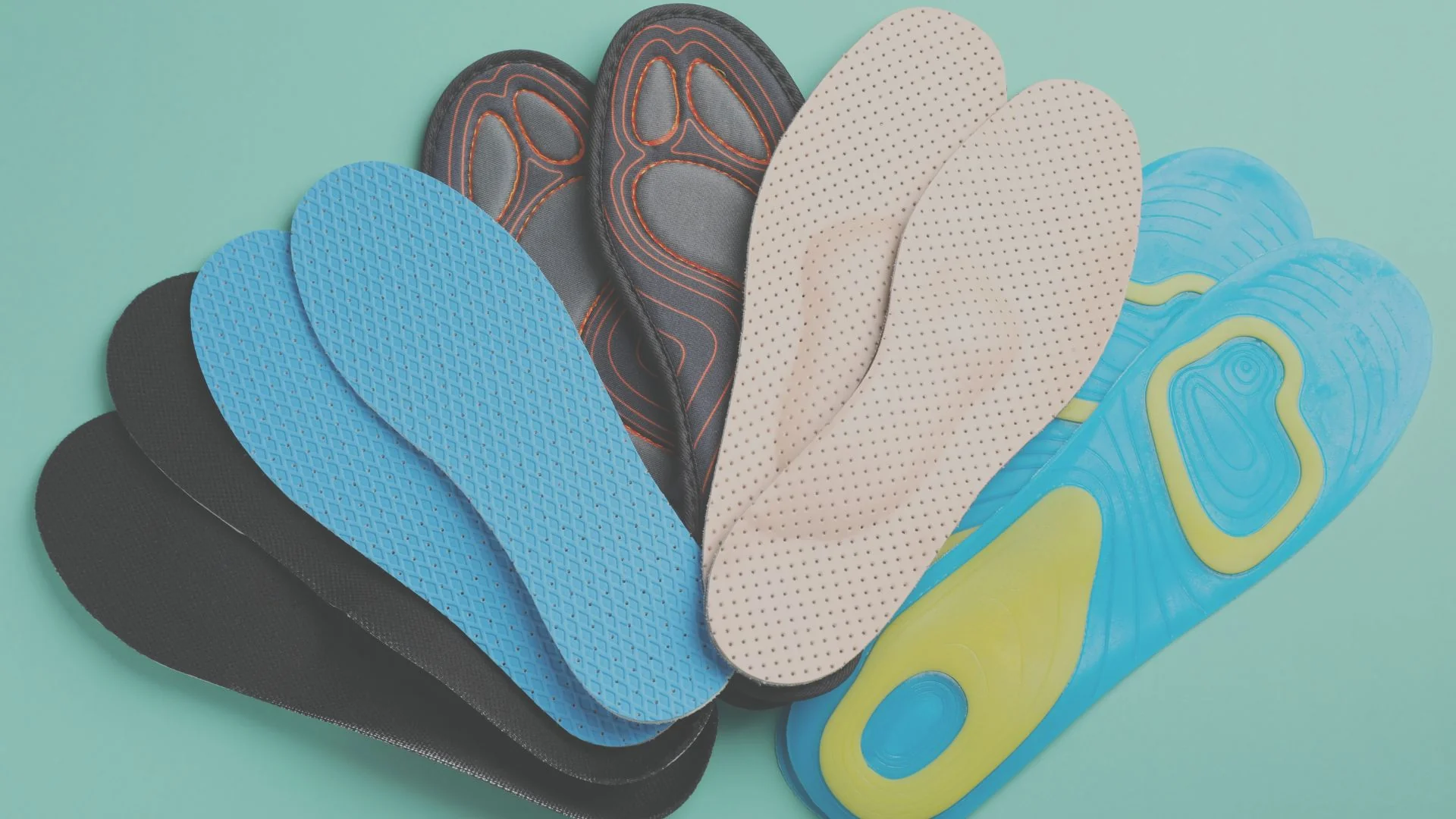
When considering whether to opt for custom orthotics or over-the-counter insoles, several factors come into play based on individual requirements for personalized fit and targeted support.
When to Consider Custom Orthotics
Custom-made orthotics are tailored specifically to an individual’s unique foot shape and biomechanics. They offer various benefits such as:
- Personalized Fit: Custom orthotics address precise anatomical irregularities by providing a tailored fit that caters directly to individual foot contours.
- Targeted Support: These orthotics are designed based on podiatrist assessments or biomechanical evaluations which ensure targeted support where needed most.
- Biomechanical Correction: They aid in correcting gait abnormalities or imbalances by promoting proper alignment throughout various activities.
Considering custom orthotics becomes essential when individuals require specialized solutions addressing specific foot conditions or biomechanical issues beyond what standard over-the-counter options can provide.
Finding the Best Over-the-Counter Options
Over-the-counter (OTC) insoles offer a convenient solution for individuals seeking immediate relief from general discomfort without requiring customization:
- Affordability: OTC options present a cost-effective alternative compared to custom orthotics without compromising basic supportive features.
- Accessibility: These readily available options cater to common foot conditions such as plantar fasciitis or general fatigue without necessitating professional consultations.
- Generalized Support: While not personalized like custom orthotics, OTC insoles still provide adequate cushioning and mild support suitable for mild-to-moderate discomfort associated with everyday activities.
For those seeking initial relief from general discomfort or looking for basic supportive features without extensive customization requirements, exploring reputable OTC options serves as a viable starting point before considering more specialized solutions.
By weighing these considerations when choosing between material types as well as custom versus over-the-counter options, individuals can confidently select suitable insole solutions aligned with their unique needs.
Tips for Trying Out and Adjusting to New Insoles
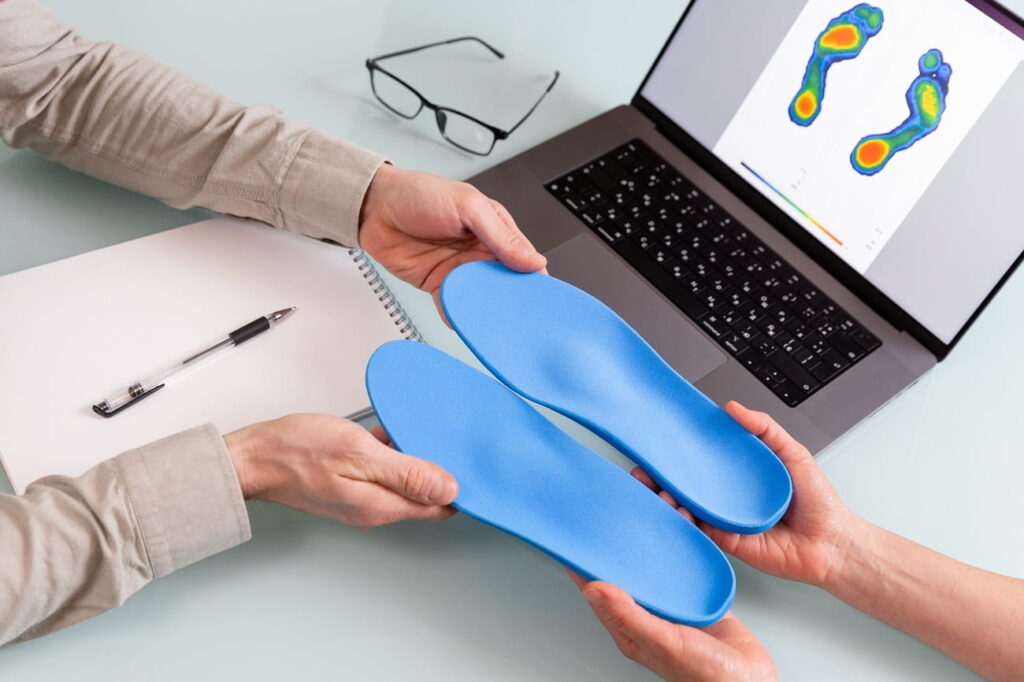
Once you’ve selected the right insoles based on your specific needs, it’s essential to understand how to effectively test them before making a purchase and how to navigate the adjustment period once you start using them. Here are some valuable tips for ensuring a seamless transition to your new insoles.
How to Test Insoles Before Buying
The Importance of a Proper Fit
Before committing to a pair of insoles, it’s crucial to prioritize the fit within your shoes. A proper fit ensures that the insoles provide optimal support and comfort without causing any additional discomfort or crowding within the shoe. When trying out insoles:
- Pay Attention to Sizing: Ensure that the insoles match the size of your shoes, providing a snug fit without being too tight or loose.
- Assess Arch Support: Evaluate whether the arch support aligns with your foot’s natural arch shape, offering adequate reinforcement without causing strain.
Remember, an ill-fitting pair of insoles can exacerbate existing foot issues or create new discomfort, underscoring the significance of prioritizing proper fit during the testing phase.
What to Look for During a Trial Period
During the trial period with new insoles, it’s important to observe various factors that contribute to overall comfort and functionality. Consider these aspects when testing out your new insoles:
- Pressure Points: Note any areas of increased pressure or discomfort while wearing the insoles, especially during activities such as walking or standing.
- Impact on Existing Pain: Assess whether the insoles alleviate existing foot pain or contribute positively to reducing discomfort associated with specific conditions.
By paying attention to these key indicators during the trial period, you can make informed decisions about whether the selected insoles effectively address your individual needs.
Testimonials:
- Mike Navarro, Runner: “On a scale of 1 to 10 (10 being painful), I typically feel a 4-5 when I go on runs. These insoles changed that pain to about a 2-3 while wearing the same shoes.”
- David Jean Louis, Everyday Walker: “These were able to really give my old boring sneakers new life. I typically feel irritation on the outside of my heel on my right foot and top of the big toe on my left, but these insoles really alleviated those pressure points and allowed me to stand and walk for longer.”
These testimonials highlight how individuals experienced noticeable improvements after incorporating suitable insoles into their footwear, emphasizing the importance of finding solutions that alleviate discomfort and enhance mobility.
Adjusting to Your New Insoles
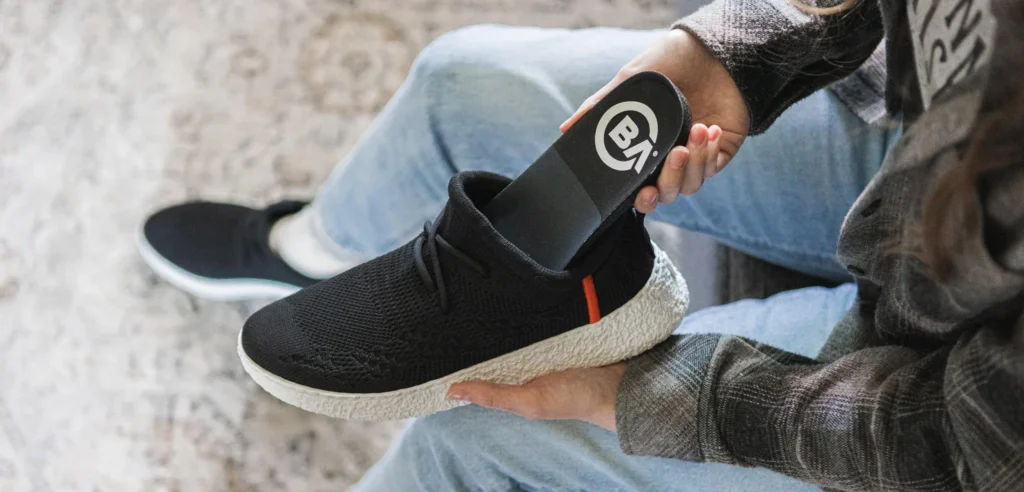
What to Expect During the Adjustment Period
It’s common for individuals transitioning to new insoles to experience an adjustment period as their feet acclimate to the changes. Understanding what this adjustment entails can help manage expectations:
- Initial Discomfort: It’s normal to experience initial discomfort as your feet adapt to different levels of support and cushioning provided by the new insoles.
- Gradual Adaptation: Over time, your feet will gradually adjust as they become accustomed to the altered biomechanics facilitated by the insole design.
While some initial discomfort is expected during this phase, it’s important not to dismiss persistent pain or discomfort beyond what is considered reasonable during an adjustment period.
When To Seek Adjustments or Alternatives
If prolonged use of new insoles continues to cause significant discomfort or exacerbates existing foot issues, it may be necessary:
- Seek Professional Advice: Consult with a podiatrist or orthopedic specialist if persistent discomfort hinders daily activities despite allowing ample time for adjustment.
- Consider Alternative Options: Explore alternative styles or materials that better align with your specific needs if initial adjustments fail.
Where to Seek Further Advice

When it comes to seeking further advice on insoles or shoe inserts, there are various avenues to explore, ranging from consulting with podiatrists and other specialists to leveraging online resources and reviews. Each of these options provides valuable insights and guidance for individuals looking to make informed decisions about their foot health.
Consulting with Podiatrists and Other Specialists
Professional Evaluation and Customized Recommendations
If you find yourself unsure about which type of insole will suit your specific needs, seeking professional advice from a podiatrist or orthopedic specialist is highly recommended. These healthcare professionals possess the expertise to conduct a thorough assessment of your feet, identify any structural irregularities or imbalances, and provide personalized recommendations tailored to your individual needs.
According to Dr. Smith, a renowned podiatrist, “It’s always a good idea to visit a podiatrist if you’re unsure which type of insole will suit your needs. We can evaluate your foot structure, gait pattern, and any existing conditions to recommend the most suitable insole for you.”
Complex Foot Issues and Specialized Orthotic Support
For individuals dealing with complex foot issues or those in need of specialized orthotic support, consulting with a podiatrist or orthopedic specialist is essential. These professionals can offer comprehensive evaluations and customized solutions that address specific foot conditions or biomechanical abnormalities.
Benefits of Insoles for Reducing Injuries and Improving Foot Health
In addition to addressing existing foot issues, insoles can also play a crucial role in reducing injuries and improving overall foot health. According to Coach Emily, an experienced running coach and physical therapist, “Insoles can be of help when you’re recovering from ailments such as shin splints, turf toe, and plantar fasciitis. Or they can simply stop your feet from sliding around in your shoes or provide an extra layer of cushioning to prevent blisters by redistributing pressure more evenly across your foot.”
By consulting with knowledgeable professionals such as podiatrists or orthopedic specialists, individuals can gain valuable insights into selecting the right insoles that cater specifically to their unique foot requirements.
Online Resources and Reviews

Finding Reliable Information Online
Resources:
- American Podiatric Medical Association (APMA): https://www.apma.org/
- National Foot Health Awareness Week: https://www.bvhealthsystem.org/expert-health-articles/national-foot-health-awareness-month
- Foot Health Facts: https://www.foothealthfacts.org/
- Online Retailers: Websites selling insoles, such as Amazon, Zappos, and specialized foot care retailers.
- Podiatrist Websites: Websites of individual podiatrists or podiatry practices offering information on foot health and insole recommendations.
- Footwear Manufacturers: Websites of shoe manufacturers that offer insoles or provide information on insole compatibility with their products.
Key Takeaways and Final Thoughts
As you navigate through this journey of selecting appropriate insoles, here are some key takeaways to consider:
- Prioritize Foot Health: Investing time and effort into understanding your unique foot requirements is crucial for prioritizing long-term foot health.
- Customization Matters: Whether opting for over-the-counter options or custom orthotics, personalized fit and targeted support play a significant role.
- Activity-Specific Support: Matching your daily activities with suitable insole features ensures optimal comfort during various physical pursuits.
- Professional Guidance: Seeking advice from podiatrists or specialists can provide valuable insights into selecting the right insoles tailored to individual needs.
People Also Ask
How to choose the right sole?
Choose the right sole based on your activity (walking, running, or standing), foot shape (flat feet or high arches), and comfort. Prioritize cushioning, support, and durability for the best results.
How do I find out what insoles I need?
Identify your foot type (flat, high-arched, or neutral) and consider your lifestyle. If you have specific issues like foot pain, consult a podiatrist for tailored advice, or choose insoles designed for your specific condition.
How to choose the right orthotics?
Custom orthotics are best for serious foot issues, but for general comfort or mild pain, over-the-counter orthotics designed for your foot type and activity level can be a good option. A podiatrist can guide you for custom ones.
What are the qualities of a good insole?
A good insole offers proper arch support, cushioning, shock absorption, and a comfortable fit. It should be made of durable materials and provide stability for your foot type and daily activities.
What size insoles should I buy?
Always match the insole size with your shoe size. Insoles are typically cut-to-fit, so you may need to trim them for a perfect fit. Follow manufacturer guidelines for sizing.
How to choose insoles for flat feet?
Look for insoles with strong arch support, stability, and firm cushioning. Orthotic insoles specifically designed for flat feet will help reduce pain and improve posture.

